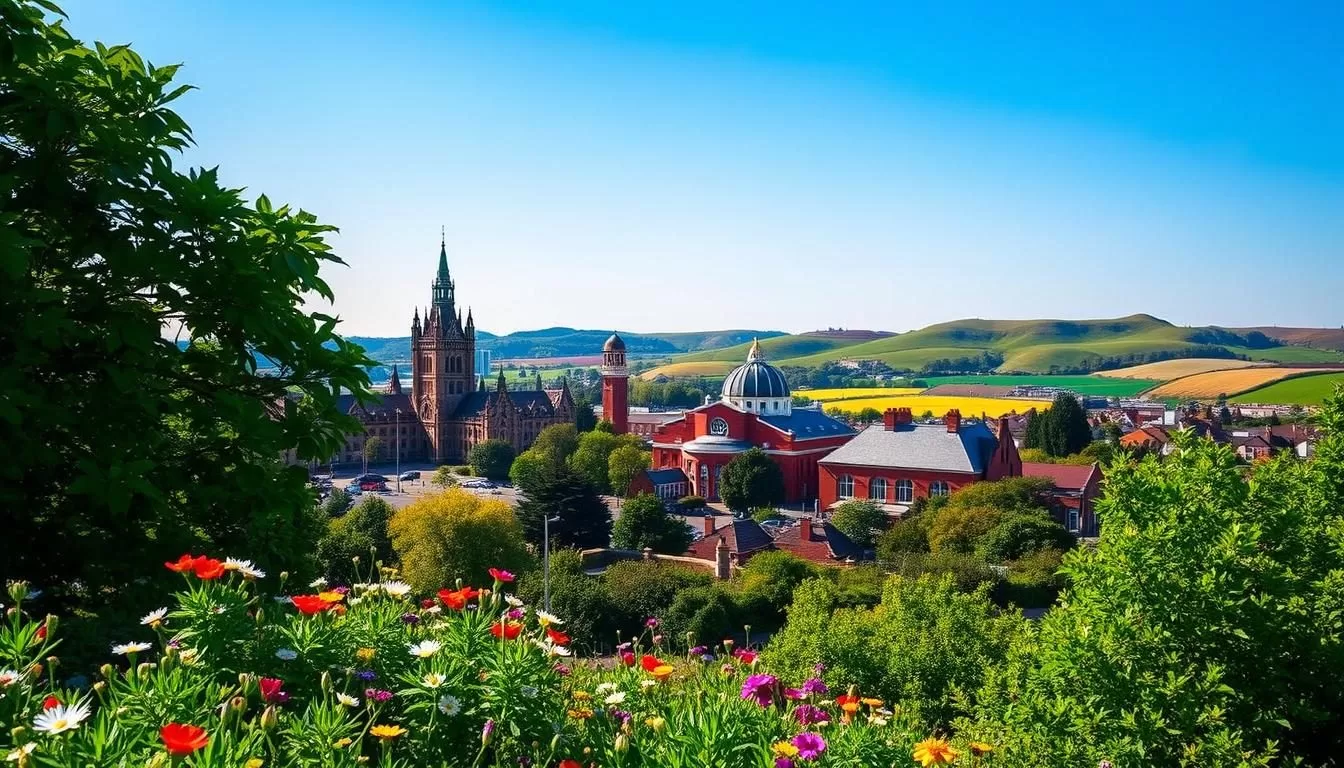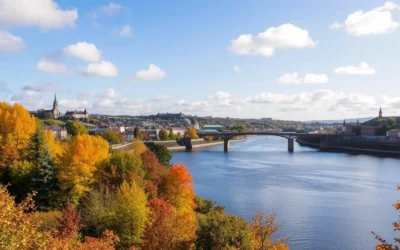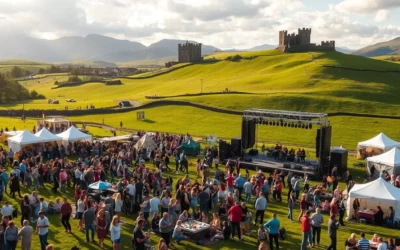✓ Accommodations✓ Flights✓ Rental Cars
Planning a trip to Belfast? Knowing the best time to visit can make all the difference. As the capital, Belfast offers a unique blend of history and culture, but its weather plays a big role in your experience. The city enjoys a temperate climate, thanks to the Gulf Stream, but it’s no stranger to rain.
Summers here are warmer and drier, with July being the hottest month. Winter, on the other hand, brings colder temperatures and more rainy days, especially in January. Understanding these seasonal patterns helps you pack smart and plan activities accordingly.
Whether you’re exploring historic landmarks or enjoying the vibrant local scene, timing your trip around the weather ensures a smoother, more enjoyable adventure. Let’s dive into the details to help you make the most of your visit.
Understanding Northern Ireland’s Unique Climate
Understanding the climate is key to planning your visit. The region enjoys a marine climate, influenced by the Gulf Stream. This means mild winters and cool summers, but rain is common throughout the year.
Monthly Temperature Averages
January is the coldest month, with average temperatures around 42°F. July, the warmest month, sees averages of 60°F. These variations mean you’ll need to pack differently depending on the season.
Spring and fall offer moderate temperatures, ranging from 50°F to 57°F. This makes these seasons ideal for outdoor activities without extreme heat or cold.
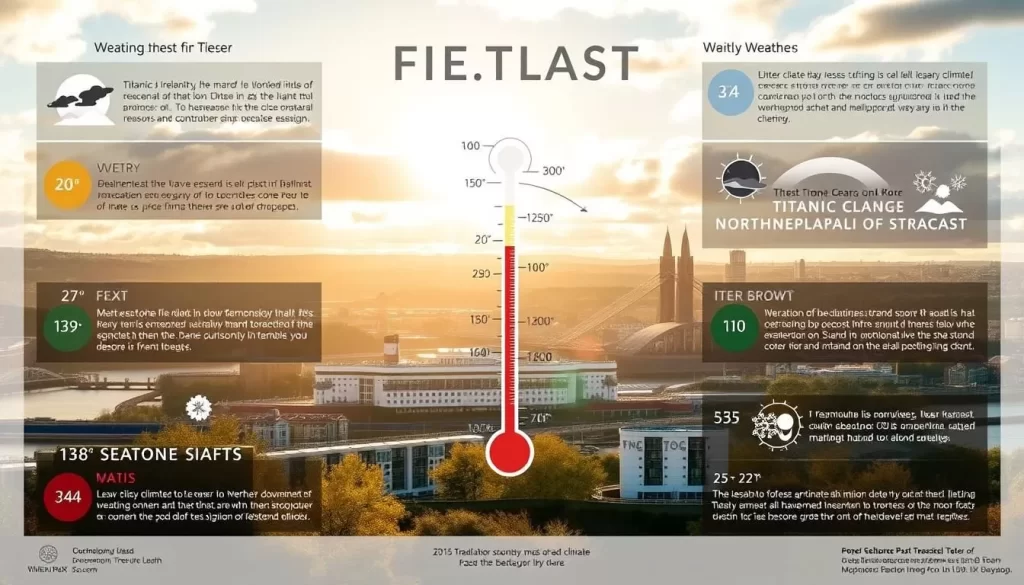
Rainfall and Daylight Insights
Rainfall is spread fairly evenly, but October and November are the wettest months. On average, rain falls on more than half the days in a month.
Daylight hours vary significantly. In December, you’ll have around 7 hours of daylight, while June offers up to 17 hours. This affects how much time you have for sightseeing.
By understanding these patterns, you can plan your activities and packing to match the weather. Whether it’s a sunny summer day or a crisp winter morning, you’ll be prepared.
Northern Ireland, United Kingdom: Best Months for a Weather-Savvy Trip
Choosing the right time to explore this region can transform your travel experience. The weather varies throughout the year, and understanding these patterns helps you plan better. Late spring to late summer is ideal for fewer rainy days and pleasant temperatures.
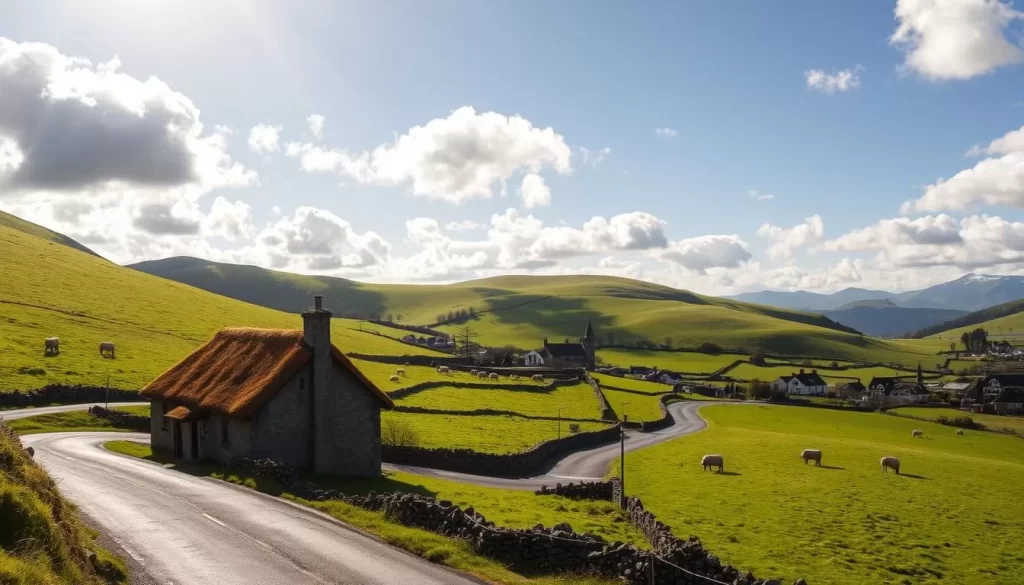
Shoulder seasons, like early spring and fall, offer a unique advantage. These periods are less crowded and more budget-friendly. You’ll enjoy moderate weather, perfect for outdoor activities and exploring both cities and countryside.
Summer brings long, sunny days, ideal for sightseeing and festivals. In contrast, winter offers a cozy, crisp atmosphere, perfect for indoor attractions and seasonal festivities. Each season has its charm, so your choice depends on your preferences.
To make the most of your travel, check specific weather data like rainfall and temperature variations. This ensures you’re prepared for any conditions and can enjoy your trip to the fullest.
| Season | Weather | Highlights |
|---|---|---|
| Spring | Mild, moderate rain | Blooming landscapes, fewer crowds |
| Summer | Warm, less rain | Long days, festivals |
| Fall | Cool, occasional rain | Autumn colors, budget-friendly |
| Winter | Cold, frequent rain | Cozy indoor activities, seasonal events |
Planning Your Trip: What to Pack for Every Season in Belfast
Packing smart for Belfast means preparing for every season. The city’s weather can shift quickly, so versatility is key. Whether you’re visiting during the mild spring, warm summer, or chilly winter month, having the right gear ensures comfort and convenience.
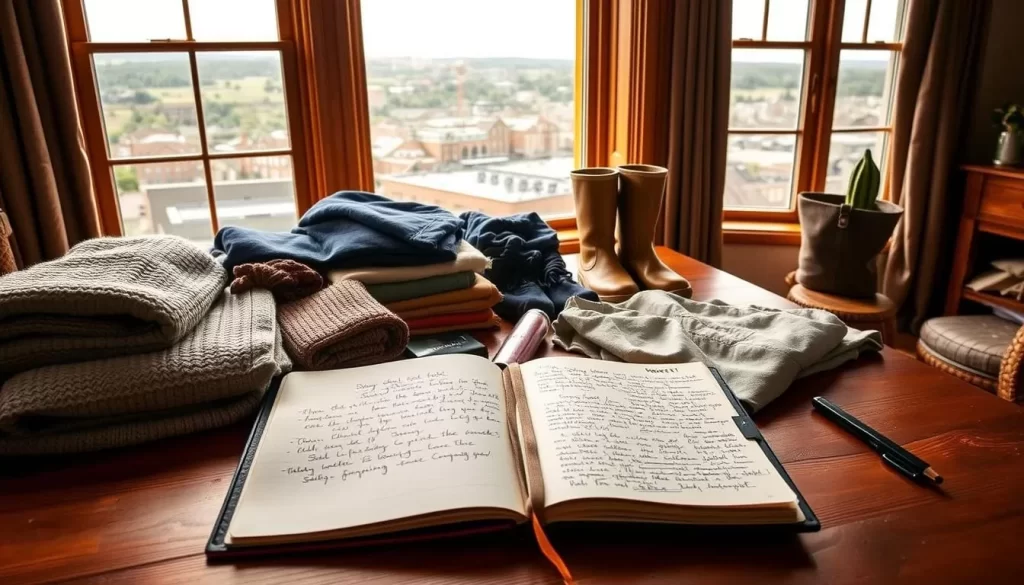
Spring and Fall Essentials
Spring and fall bring mild temperatures and occasional rain. Pack a light jacket or waterproof coat to stay dry. Layers are your best friend during this period, as mornings can be cool and afternoons warmer.
Don’t forget an umbrella and comfortable walking shoes. These seasons are perfect for exploring, so be ready for both indoor and outdoor activities.
Summer Layering Tips
Summer in Belfast is warm but not overly hot. Opt for light layers like t-shirts and cardigans. Evenings can get cooler, so a light sweater is a must.
Bring sunglasses and sunscreen for sunny days. Comfortable footwear is essential for long walks and sightseeing.
Winter Gear Must-Haves
Winter demands sturdy, weather-resistant gear. A thick coat, gloves, and a warm hat are essential. Waterproof boots will keep your feet dry during rainy or snowy days.
Layering is still important, as indoor spaces are often heated. Pack thermal wear for extra warmth on colder days.
| Season | Essential Items |
|---|---|
| Spring/Fall | Light jacket, umbrella, layers, walking shoes |
| Summer | Light layers, cardigan, sunglasses, sunscreen |
| Winter | Thick coat, gloves, hat, waterproof boots |
Exploring Seasonal Attractions and Outdoor Activities
Discovering the perfect blend of urban charm and natural beauty is key to a memorable visit. Whether you’re strolling through bustling streets or wandering serene landscapes, there’s something for every traveler. The city offers vibrant walking routes, while the countryside invites you to explore its lush greenery. Each season brings unique opportunities to experience both.
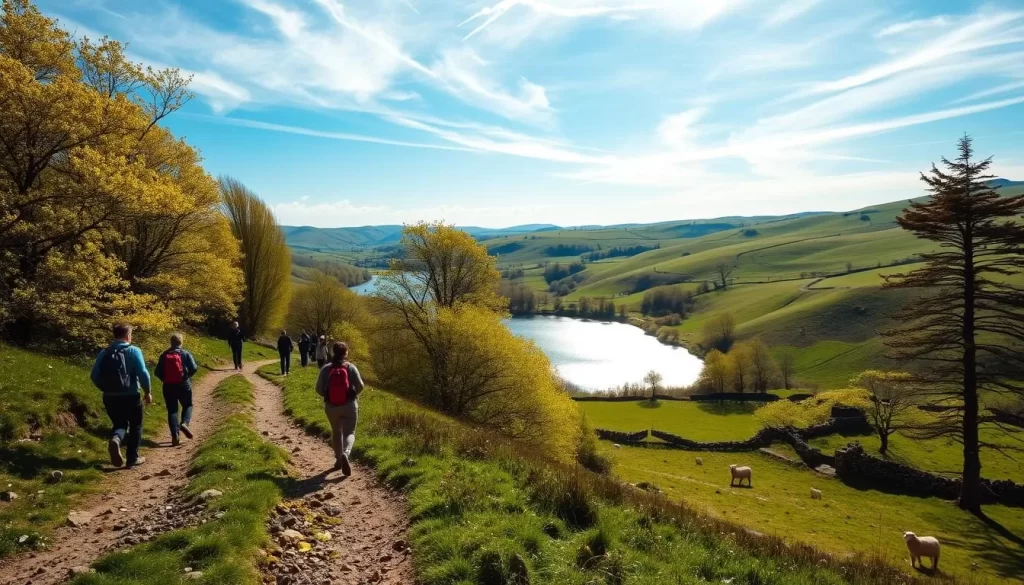
City Walks and Countryside Tours
Belfast’s city walks are a delight for weather-savvy travelers. The Lagan Towpath is a popular route, offering scenic views along the river. For history buffs, the city center is dotted with landmarks like the Titanic Belfast museum. These walks are perfect for mild spring and fall days.
Venturing into the countryside is equally rewarding. The Antrim Coast offers breathtaking views, especially during summer. Guided tours take you through rolling hills and ancient castles, showcasing the region’s natural beauty. Autumn adds a golden hue to the landscapes, making it an ideal time for exploration.
Cultural Attractions and Seasonal Tips
Complement your outdoor adventures with visits to local museums and historical sites. The Ulster Museum provides fascinating insights into the region’s heritage. Seasonal conditions influence the best times to tour landmarks. Summer’s long days are perfect for guided walks, while winter’s cozy atmosphere suits indoor attractions.
To fully experience the charm of this region, balance your itinerary between urban explorations and rural day trips. Each season offers distinct highlights, ensuring a rich and varied experience.
| Season | Activities |
|---|---|
| Spring | City walks, blooming gardens, museum visits |
| Summer | Countryside tours, coastal walks, festivals |
| Fall | Autumn hikes, historical tours, cultural events |
| Winter | Indoor museums, cozy city walks, seasonal festivities |
For more tips on aligning your travel plans with seasonal weather patterns, explore our detailed guide. Whether you’re drawn to the city or the countryside, timing your visit ensures a seamless and enjoyable adventure.
Insider Tips for Budget and Crowd Management in Northern Ireland
Timing your visit strategically can save you money and help you avoid crowds. By planning your trip during the right time of year, you can enjoy a more relaxed and budget-friendly experience. Here’s how to make the most of your travel plans.
Travel During the Shoulder Seasons
One of the best ways to save money and avoid crowds is by traveling during the shoulder seasons. These periods, typically April to May and September to October, offer moderate weather and fewer tourists. Hotels and attractions are often less crowded, and prices tend to be lower.
For example, May is the driest part of the year, making it ideal for outdoor activities. Similarly, September offers pleasant temperatures and stunning autumn landscapes. By choosing these months, you can enjoy a more peaceful experience.
Avoiding Peak Tourist Times
Peak tourist times, like summer and major holidays, can be overwhelming. If you prefer a quieter trip, avoid these periods. Instead, consider visiting during mid-week or early in the week when crowds are thinner.
Another fact to keep in mind is that hotel prices are often higher during peak seasons. Booking in advance can help you secure better rates. Additionally, popular attractions tend to have shorter lines during off-peak hours.
“Traveling during shoulder seasons not only saves money but also allows you to experience destinations in a more authentic way.”
Here’s a quick guide to help you plan your trip:
| Time of Year | Benefits |
|---|---|
| April-May | Moderate weather, fewer crowds, lower prices |
| September-October | Pleasant temperatures, autumn scenery, budget-friendly |
| Mid-Week | Shorter lines, better availability |
For more tips on managing your travel budget, check out this backpacking guide. By timing your trip wisely, you can enjoy a stress-free and affordable adventure.
How Climate Affects Travel in Northern Ireland’s Urban and Rural Areas
Exploring the diverse weather patterns in urban and rural areas can significantly enhance your travel experience. Whether you’re strolling through bustling streets or wandering serene landscapes, understanding these variations helps you plan better. From dining options to daylight hours, the climate plays a key role in shaping your adventure.
Urban vs. Rural Weather Variations
Urban areas, like Belfast, often experience milder temperatures due to the heat-retaining properties of buildings. In contrast, rural regions can feel cooler and more exposed to wind and rain. These micro-climates influence everything from outdoor activities to local food scenes.
For example, city cafes and restaurants thrive in all seasons, offering cozy indoor spaces during rainy days. In rural areas, dining options may lean toward hearty, locally sourced meals that reflect the region’s agricultural roots. Knowing these differences helps you choose the right spots for meals and snacks.
Daylight hours also vary. Urban areas benefit from extended lighting, making evening strolls safer and more enjoyable. In the countryside, shorter daylight hours in winter mean you’ll need to plan activities earlier in the day. Keeping these factors in hand ensures you make the most of your time.
Even small weather changes can alter your plans. A sudden rain shower might shift your focus from hiking to exploring a nearby museum. Being adaptable allows you to enjoy every moment, no matter the conditions.
| Aspect | Urban Areas | Rural Areas |
|---|---|---|
| Temperature | Milder, heat-retaining | Cooler, exposed to wind |
| Dining Options | Year-round cafes, diverse cuisines | Local, hearty meals |
| Daylight Hours | Extended lighting in evenings | Shorter in winter, plan early |
| Activity Planning | Flexible, indoor options | Weather-dependent, adaptable |
For those interested in garden tourism, understanding these climate differences is especially valuable. Urban gardens often feature curated designs, while rural landscapes showcase natural beauty. Timing your visit to match the weather ensures a seamless and enjoyable experience.
Conclusion
Exploring this country offers a unique blend of experiences, shaped by its distinct weather patterns. Understanding the climate, from average temperatures to rainfall and daylight variations, is the best way to plan a seamless trip. Whether you prefer mild springs, warm summers, or cozy winters, each season brings its own charm.
Packing smartly ensures you’re ready for any weather. Light layers for spring and fall, sunscreen for summer, and warm gear for winter make all the difference. Timing your visit during shoulder seasons can also save money and help you avoid crowds.
Use this guide to customize your adventure. From urban walks to countryside tours, aligning your plans with the weather ensures a memorable experience. Ready to explore? Start planning your trip the right way and enjoy every moment in this beautiful country.
For more tips on seasonal travel, check out our guide to the best time to visit.
The above is subject to change.
Check back often to TRAVEL.COM for the latest travel tips and deals.
